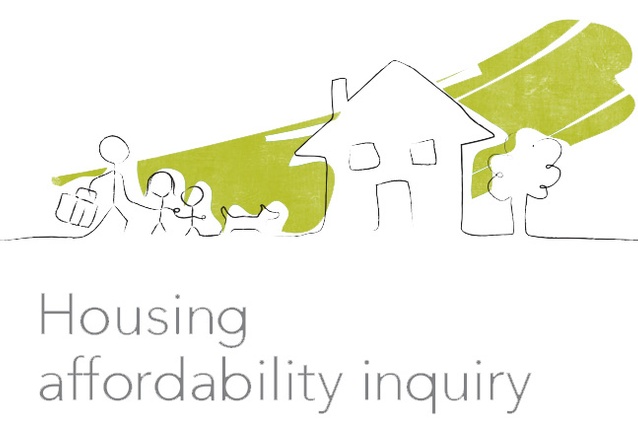Urban planning gunned down by Productivity Commission
Having delivered its final say on housing affordability to Parliament, the Productivity Commission hasn’t held back from its repeated portrayal of urban planning as a “negative influence”.
Between its lengthy draft – see a précis in December’s Architecture Now – the Commission has delivered more volume in its final report while managing to cover almost exactly the same ground.
Having woken up more fully to the multi-dimensional nature of the “affordability problem” there are now new chapters to read on the dynamics of the private rental market and social housing, and a swathe of new findings and recommendations emerge for Maori housing.
None of which changes the original premise that housing is more expensive than it needs to be, and if so what needs to be done?
For Commission head Murray Sherwin, formerly of MAF and the Reserve Bank, taxation levers – other than in the context of a broad first principles review of the tax system – are a no go area.
Perhaps the most obvious candidate in a productivity report is the performance of the building industry, which does receive attention. This is being sorted ‘in house’ through the Building and Construction Sector Productivity Partnership, with an additional light-handed directive given that smaller firms be assisted more to improve their management practices, their procurement processes and the way they engage with sub-contractors.
The findings and one recommendation made by the Commission on the building industry only raise one new point of emphasis, namely a call for less dampening of innovation. Unfortunately this is coupled with a weak acceptance that “little can be done about market characteristics which reflect consumer preferences and New Zealand’s smallness”.
The one thing that really got the Commission agitated, it seems, is the minefield of urban planning – the source of three new findings and, along with areas of who pays for infrastructure development and building regulations, the recipient of 22 recommendations (two thirds of the report’s total).
Not surprisingly the base issue is land, but the Commission certainly goes much further – with its main chapter on urban planning supplemented by some rushed appendices: one on the costs of urban form that is, in fact, an extended defence of traditional suburban housing, and another on collaborative models for urban land development.
In brief the planning community is given its pedigree, and anything attaching to Smart Growth is all but shot down in flames. The Commission even goes so far as to question “whether the planning discipline is equipped to evaluate and reconcile (multiple dimensions of wellbeing)”.
The selected gospel for understanding housing preferences featured in the report is the work done for the now defunct Centre for Housing Research Aotearoa New Zealand (CHRANZ) on residential intensification by CityScope Consultants in 2011.
The Commission is so intent on traipsing across the pros and cons between brownfield (inner city infill) and greenfield (outer city infill) development that a reader of their report can be forgiven for feeling stretched this way and that. Nothing new for Aucklanders.
However you read it, in plain language or not, the conflicted bias against high or increasing density lurks throughout this report’s underlying drift. So much so that when, after much hand wringing, the report settles on the side of encouraging “greater density” and opts for the sane use of compromise terms “moderate-density development” and “cost-effective brownfield development”, some sigh of relief is in order.
Whichever way it’s cut, the real end game is the need to engage in building affordable housing at scale (with Fletcher Building chipping in 50 lot developments as an economic minimum), and the Commission canvasses a broad range of vehicles for taking a more collaborative approach, hinting at the need for forming more CCOs that could drive the approach.
Where the report also gets interesting is in its assessment of the way that minimum lot sizes and building covenants act as barriers to the entry of affordable housing “as a planning policy without public input or scrutiny”. However the opportunity cost of both this issue and reference to potentially problematic land banking are left to drown.
Some of the more easily politicised content in the Commission’s inquiry where it pushes back on the adequacy and efficacy of the direction of Housing New Zealand and social housing (currently with DBH) is grabbing some space in wider media. Even so after hammering the view that current funding for the community sector to help fill that void is insufficient, the Commission actually recoils from the recommendation in its draft report for increase in the Social Housing Fund – going instead for a softer review of the Fund’s woefully slow and procedurally grey first funding round.
Murray Sherwin and his colleagues obviously want to see the handbrakes they’ve identified are restricting the addition of new housing or redeveloped stock taken off. They want to see developments accelerated but are struggling to find exemplars, listing only work done by NZTA, Auckland’s Hobsonville development and, at a renewal and land development level, opting cautiously for two Australian models: Places Victoria and the Queensland Urban Land Development Authority.
With this report of circular arguments done and dusted, it can only be hoped that its legacy doesn’t live on in some of the desperately uneven after-thoughts about the costs of urban form. The best hope is that it inspire our hands-on experts in housing to rise to the challenges of building more cost-effective houses without sacrificing the future to an exclusively high-income vision.
Note: The Productivity Commission is now moving on to an inquiry into the state of our Closer Economic Relations with Australia. See www.productivity.govt.nz










